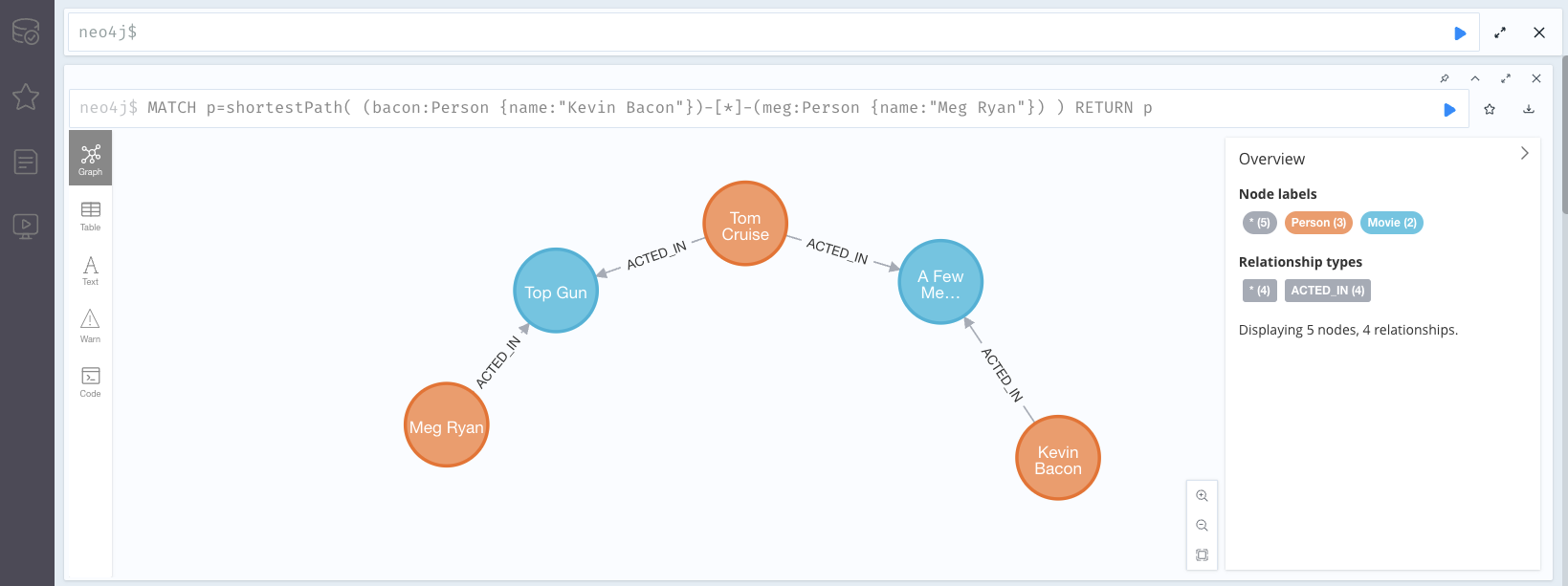Result frames
There are a variety of ways to view data in Neo4j Browser. All queries that you run in the Cypher editor populate a reusable result frame. Query results are rendered as:
-
Visual graph — graph result frame.
-
Table — table result frame.
-
Plain text table — plain text result frame.
-
Meta data — code result frame.
You can switch between those with the icons on the left side of the result frame.
|
If you cannot see the result, you might be in Graph mode but had your query return tabular/scalar data. To see the results, switch the mode to the Table view. |
Graph result frame
The graph visualization functionality is designed to display a node-graph representation of the underlying data stored in the database in response to a given Cypher query. Nodes are represented as circles and relationships as lines and is especially useful for determining areas of interest or quickly assessing the current state and structure of the data.

|
A yellow squiggly line anywhere in your query indicates a warning. This is most commonly caused by a query attempting to match a pattern not present in the graph, but can be caused by a number of things (see List of all notification codes). Hover over the underlined segment to see the explanation. |
|
Handy tips
|
Table result frame
The Table result view displays the result in a table format. It also reports the query time, including the actual query execution time, latency, and deserialization costs.

Even if you feel that the relationship is not hard to find in the tabular format, imagine if you have a graph containing the entire filmography careers of these persons and hundreds of other actors, directors, and film crew members. The connections could easily be lost in a non-visual presentation.




